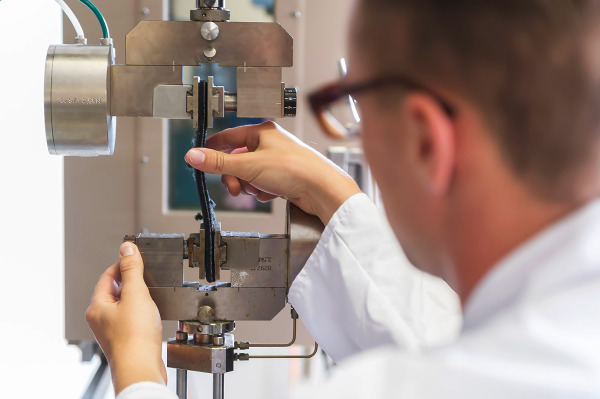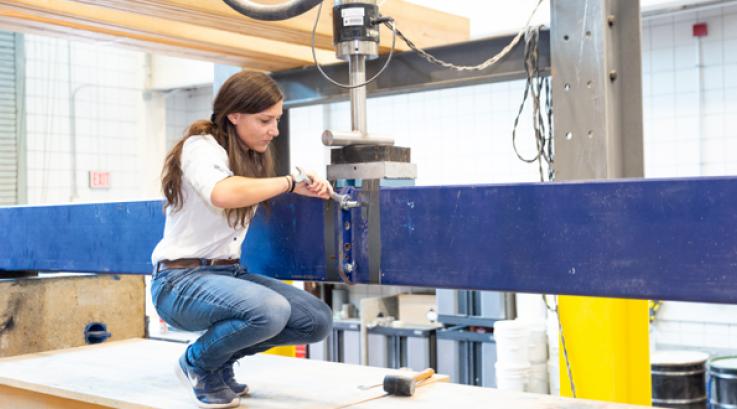Grasping Evaluation: Your Materials Test Lab Authority
Wiki Article
From Concept to Reality: The Relevance of Products Testing in Product Advancement
In the world of product development, the journey from idea to reality is a complex and complex process. One crucial facet that typically goes unnoticed yet plays an important role is products testing. Products testing is the organized assessment and evaluation of the homes and behavior of numerous materials made use of in item advancement. It involves specifying material needs, carrying out strength and longevity testing, reviewing chemical composition and compatibility, and analyzing safety and performance criteria. By subjecting materials to strenuous testing, item developers can make best use of product quality, dependability, and ultimately, consumer contentment. This write-up explores the importance of products testing in item advancement and highlights its importance consequently cutting-edge ideas into substantial, effective products.Specifying Material Needs

To define material demands precisely, detailed study and evaluation are necessary. The product development team should think about aspects such as mechanical properties, chemical compatibility, sturdiness, and cost-effectiveness. They have to likewise take into account any regulative or safety and security requirements that the item needs to fulfill.
Among the key objectives in defining product needs is to determine materials that can endure the expected tensions and strains the item will certainly experience during its lifecycle. This includes considering factors such as temperature level changes, exposure to moisture or chemicals, and mechanical pressures. By selecting products that can hold up against these problems, the product's efficiency and long life can be enhanced.
Furthermore, specifying material requirements additionally includes considering the aesthetic and responsive top qualities of the materials. The aesthetic charm, structure, and really feel of the item play a significant role in its bankability and user experience.
Conducting Toughness and Toughness Checking
To guarantee the reliability and long life of a product, conducting stamina and sturdiness testing is crucial in the product growth procedure. This type of testing allows suppliers to recognize how a product will certainly perform under numerous problems and tension levels, aiding them make notified decisions concerning design alterations and material options.Toughness testing includes subjecting an item to controlled forces to establish its ability to stand up to load and pressure. This can be done through tests such as tension, compression, flexing, and torsion tests. By gauging the product's reaction to these pressures, designers can assess its structural stability and determine any weaknesses or possible failing points.

Assessing Chemical Structure and Compatibility
Chemical structure and compatibility assessment is an essential action in the product growth process as it allows suppliers to examine the viability of products for their desired applications. Comprehending the chemical makeup of a product is important to make certain that it meets the needed requirements for performance, security, and performance.Throughout the evaluation process, makers analyze the chemical composition view website of materials to identify their residential or commercial properties, such as stamina, durability, and resistance to deterioration. This details helps in selecting the most proper products for specific applications, as various materials might have differing chemical make-ups that affect their efficiency.
Compatibility analysis is just as crucial, as it makes certain that the products made use of in an item work with each other and with any type of various other compounds they might come right into call with. more helpful hints Conflict can result in chain reactions, degradation, or even failing of the item.
To examine chemical compatibility, makers carry out tests to evaluate and mimic real-world problems just how various materials communicate. These tests might consist of direct exposure to numerous temperatures, pressures, and chemicals. The outcomes of these tests assist manufacturers recognize any possible problems and make informed choices regarding product choice and design alterations.
Assessing Security and Performance Criteria
Suppliers need to thoroughly assess safety and security and performance criteria to make sure the quality and integrity of their products. The analysis of security criteria includes assessing the item's ability to run safely and without presenting any threats to consumers. This consists of examining whether the item satisfies industry-specific safety and security guidelines and standards, along with carrying out tests to identify potential dangers and dangers. Efficiency standards, on the other hand, concentrate on examining the item's ability to fulfill certain performance standards and requirements. This involves testing the item under various problems to make certain that it carries out as anticipated and fulfills the demands of the intended users. By evaluating security and efficiency criteria, suppliers can identify any possible concerns or shortcomings in their products and take the necessary steps to address them. This not only helps in making sure the safety and security of customers yet additionally boosts the total top quality and reliability of the items. It is vital for suppliers to spend in detailed testing and evaluation processes to build trust fund with their clients and preserve their credibility in the marketplace.
Optimizing Item Top Quality and Dependability
By making certain the detailed evaluation of security and performance criteria, suppliers can effectively maximize the top quality and integrity of their items. Maximizing product quality and reliability is essential for services to keep and obtain a competitive edge consumer contentment - materials test the original source lab. To accomplish this, producers must use extensive testing approaches throughout the product development procedureOne crucial aspect of taking full advantage of product top quality and dependability is conducting thorough materials screening. This involves examining the buildings and features of the products used in the manufacturing of the product. By checking the materials for aspects such as sturdiness, resistance, and toughness to ecological conditions, suppliers can determine possible weaknesses and make necessary improvements to improve the overall top quality and integrity of the item.
Additionally, producers ought to additionally take into consideration using innovative testing methods, such as non-destructive screening (NDT) NDT permits the evaluation of an item's integrity without causing damage, ensuring that the quality and integrity of the item are not compromised during the testing process.
Moreover, makers need to continually monitor and assess the performance of their items in real-world problems. This can be done with field testing and event comments from clients. By gathering and evaluating data on product performance, producers can identify areas for improvement and make necessary changes to boost the top quality and integrity of their items.
Final Thought
To conclude, materials testing plays an important function in product development by ensuring that the products made use of satisfy the needed requirements for strength, resilience, chemical composition, compatibility, performance, and safety criteria. By carrying out comprehensive screening, makers can take full advantage of the quality and integrity of their items - materials test lab. It is necessary to focus on products testing throughout the growth process to make certain the effective realization of principles into substantial productsProducts testing is the methodical evaluation and analysis of the residential properties and habits of various products used in item growth. By subjecting materials to strenuous testing, item programmers can optimize product high quality, reliability, and eventually, customer contentment.One of the essential goals in defining material demands is to identify materials that can hold up against the anticipated anxieties and pressures the product will experience throughout its lifecycle. By accumulating and evaluating information on item efficiency, manufacturers can determine locations for renovation and make necessary modifications to boost the top quality and reliability of their products.
In final thought, products screening plays an essential function in item growth by making certain that the materials used meet the needed demands for toughness, resilience, chemical structure, compatibility, efficiency, and safety and security requirements.
Report this wiki page